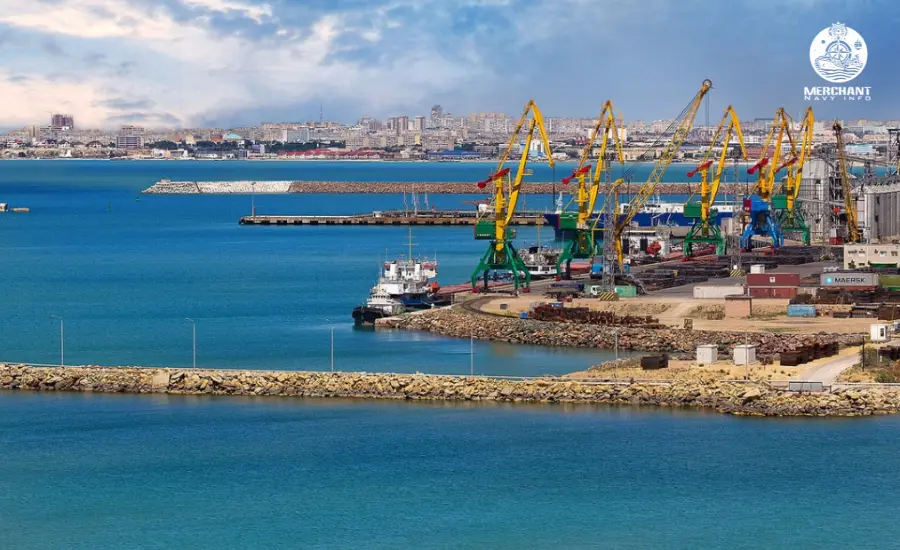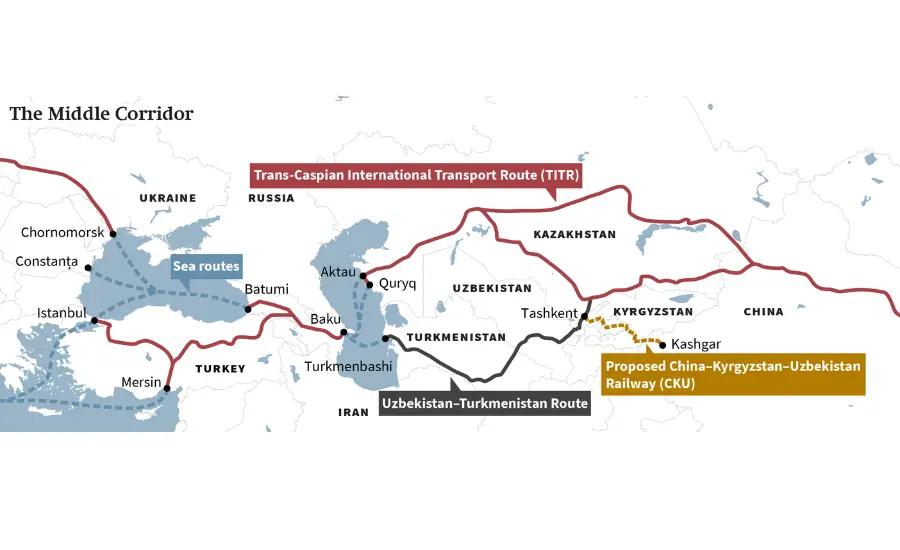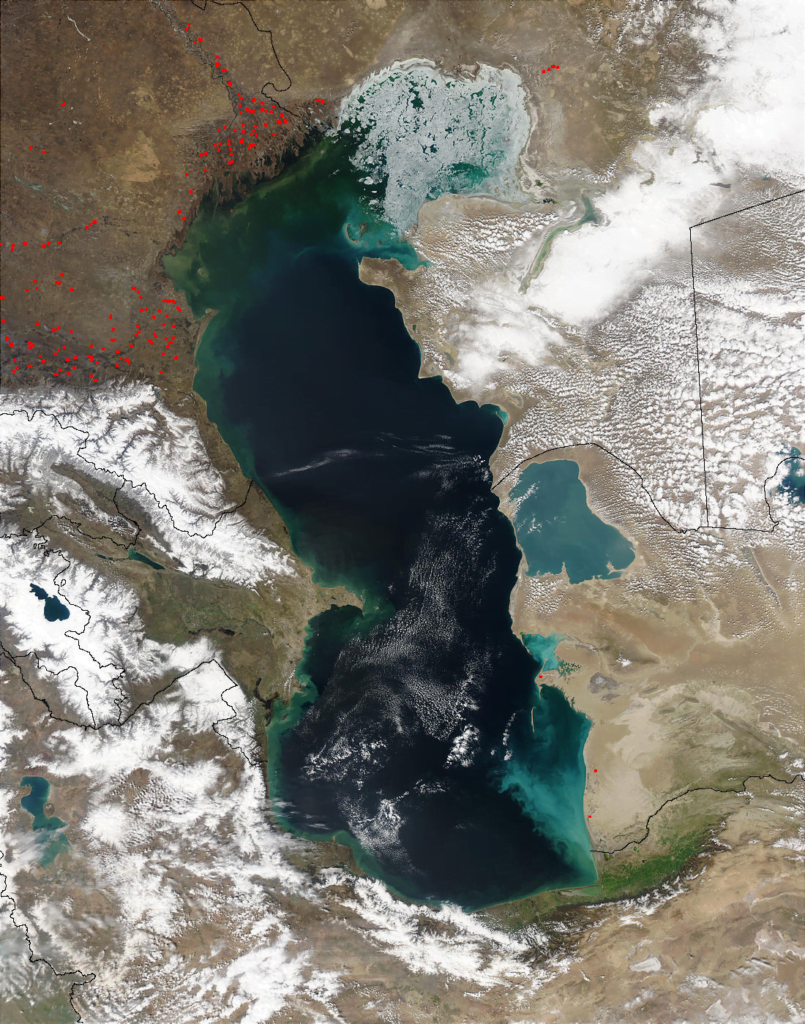
Construction of ships and ports is currently underway in the Caspian Sea. With sanctions over the Ukraine war hitting regular trade routes. In the Caucasus and Central Asia hard. All the major countries involved. Russia, China, the European Union, and all countries in the region – are pushing for new shipments. I’m looking for a way. The exact status of the largest enclosed body of water on Earth. Sea Portsor Lake, is still debated among scientists. And lies between Russia and Kazakhstan in the north, Iran in the south, Azerbaijan in the west, and Turkmenistan in the east.
It borders with this corridor and is, therefore, an important part of the Intermediate Corridor. A network of interconnecting routes connecting China and Europe, bypassing Russia. And has been a major bottleneck since the beginning of the Ukraine war. Its popularity is rapidly increasing. Before Russia invaded Ukraine in 2022. More than 90% of rail traffic between Europe and China and the majority of Central Asian countries. Imports and exports passed through Russia. Currently, most of the route has been rerouted via the Intermediate Corridor. The intermediate corridor is shorter. Less developed and more complex, and also includes a significant maritime component. Crossing the Caspian Sea Ports and, in some routes, the Black Sea.
Further Development Of The Central Corridor

It is of great importance for several reasons. Including that, it connects Central Asia with the Caucasus and Europe via Turkey and the Black Sea. “Russia is under sanctions or the possibility of civil war,” said Margarita Asenova, senior Eurasia expert at the Jamestown Foundation, a U.S.-based think tank. We are prepared in case there is.
Caspian Sea Ports

Strategic location Currently primarily a combat zone. Turkey, a NATO member, is located on the southern coast of the Black Sea. Making it relatively easy to circumnavigate it via east-west traffic. In contrast, the Caspian Sea Ports Circles. Iran’s southern coast, and Iran, like Russia to the north, are subject to sanctions. This is the main reason why the transport capacity of the Central Corridor increased for the first time in 2021. The corridor was estimated to be only 5% of the Northern Corridor.
This situation is currently changing rapidly, with major infrastructure expansion underway in the region. Shipbuilding and maintenance will be a growing industry in the Caspian Sea. In addition to the central corridor, there is another reason for large-scale development around the Caspian Sea. Russia, is cut off from many traditional import and export routes. Views this corridor as a key link to Iran and the Persian Gulf. This is part of what analysts call Russia’s “pivot to Asia.
“The Caspian Sea Ports Serves as a hub for maritime logistics and distribution. To all points on the NSEW compass,” said Chris Devonshire Ellis. Chairman of pan-Asia business and consulting firm Dezan Sheila & Associates. “Shipbuilding and maintenance will be a growing industry in the Caspian Sea. The Caspian Sea Ports, in short supply of ships. Has relatively shallow depths, sometimes poor weather conditions, and a huge amount of cargo required for Sea Port Transport. Most of the recent investment and expansion work has been carried out in the Caspian Sea.
The Five Main Ports On The Caspian Sea
Which are known as. Several large-scale expansion projects have been undertaken in recent years. Including the construction of a new Baku International Sea Ports with an RO-RO terminal. Logistics center and free trade zone, costing at least US$1.1 billion. Recently, a fertilizer terminal was constructed to serve Central Asia’s hydrocarbon exports. Currently, its transport capacity has been increased from 15 million tons per year (mtpa) to 25 mtpa. It is directly connected to the Baku-Tbilisi-Kars Railway (BTK), which transports cargo across Georgia and the United States. It will take about a week for Turkey to reach Europe.
Astrakhan Port:
Russia’s most important transshipment point. In 2020 Russia announced that it will invest approximately $1.6 billion in a new port on the Caspian Sea Ports In the city of Lagan. The port of Astrakhan is located at the mouth of the Volga River. And remains Russia’s main access to the Caspian Sea. Moscow is gradually expanding its ports and plans to invest at least $250 million (possibly up to $1 billion) in the region by 2026, increasing the port’s production capacity to 10 million tons per year, aiming to expand to 25 million tons per year. The project includes the construction of a new pier, berth, terminal, and cargo handling facilities.
Turkmenbashi
International Port is one of the largest ports on the Caspian Sea, with an annual capacity of 17 million tons, and also serves as an important gateway for trade between Turkmenistan and Central Asia. It has close ties to Russia’s Astrakhan Oblast and has recently become an important hub for the regional trade route between Kyrgyzstan and Russia, which bypasses Kazakhstan. Turkmenbashi was completed in 2018, and the construction cost was he $ 1.5 billion. It includes a bulk terminal, a ferry terminal, a polypropylene terminal, alsoa container terminal, and several oil terminals. Further expansion is expected to increase production capacity to 26 million tons per year.
Aktau Port,
Kazakhstan’s largest domestic port plays an important role in promoting Kazakhstan’s oil and also grain exports to Azerbaijan and Europe, making it an important hub in the Central Corridor. It has three dry cargo terminals and also three oil terminals and is currently undergoing approximately $25 million in renovations. An additional container hub worth approximately $29 million will also be built. The total capacity of Aktau Port and the smaller, modern Kulik Port, which opened in 2018 approximately 70 km south of Aktau, is approximately 20 million tons per year. A new grain terminal is scheduled to begin operations in Kulik later this year, being developed as a kind of expansion of Aktau, and a new oil terminal is also under construction.
Anzali Port:
Iran is betting on both routes. Iran is positioning Anzali Port, located less than 300 km from the capital, Tehran, as a kind of alternative port to Baku in Azerbaijan. Both routes are potential hubs for the intermediate corridor. Chinese products were shipped to Europe via Kazakhstan and also Aktau in Turkey, an important transit point to Astrakhan in Russia. It includes a free trade zone and has a formal production capacity of 10 million tons per year. At least $21 million worth of expansion work is currently underway, including the construction of three new wharves, general cargo, oil and grain berths, and a 4,500-ton grain silo.
Is Russia Losing Control Of The Caspian Sea?

Specialists say that development in the Caspian Sea has long been hostage to Russia’s competition as an Eurasian trade route and that Russia has been losing control of the Caspian Sea since the collapse of the Soviet Union in 1991. It has said it still retains unofficial veto power over projects in the region. Now, the weakening and increase of China’s soft power in this region, along with Russian Sanctions soft power and the development of separate plans for maritime development by Russia and Iran, are linked to several powerful geopolitical trends.
Supporting the rise of the Caspian Sea as a major trade source. It is a transportation hub that makes Asia possible. Although European and American diplomats have directly benefited from projects like the Middle Corridor, they have arguably been slow to adapt to the tectonic changes in the region. “It remains to be seen whether the West, especially the United States, will make Central Asia a priority in its competition with China while isolating Russia,” Asenova added. “Western countries seem to be lagging behind and not being as proactive as they should be.










